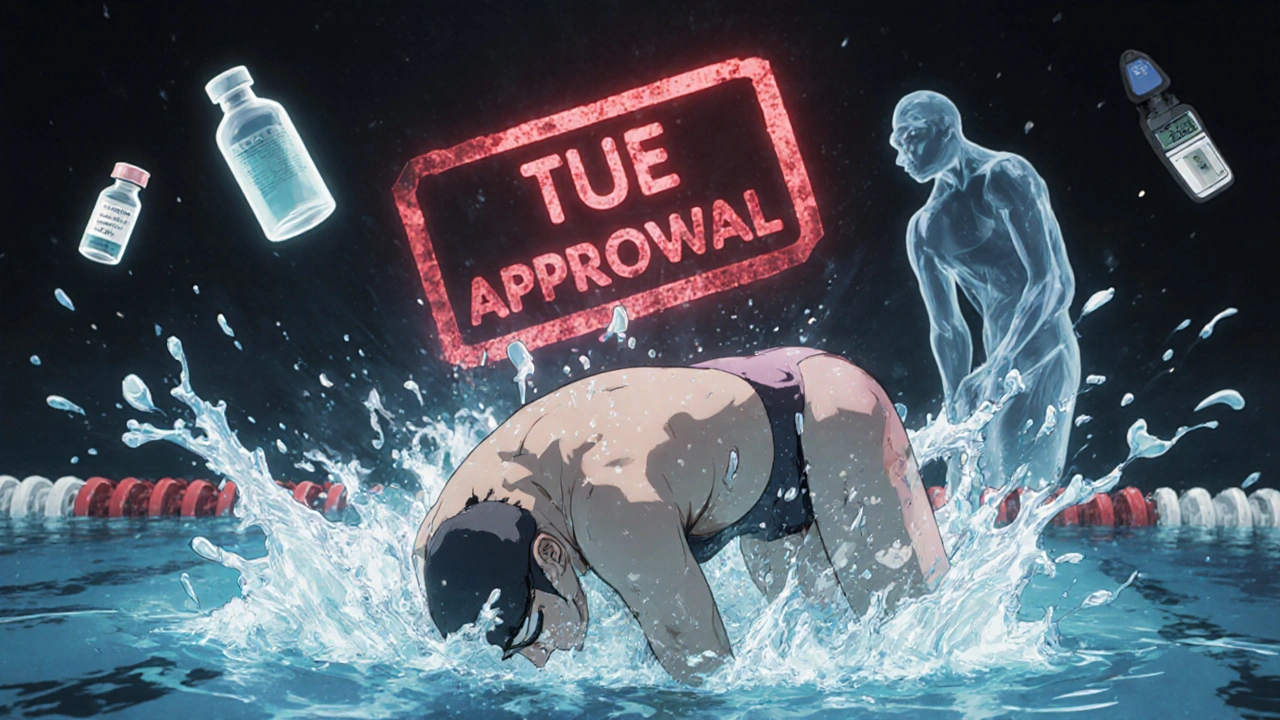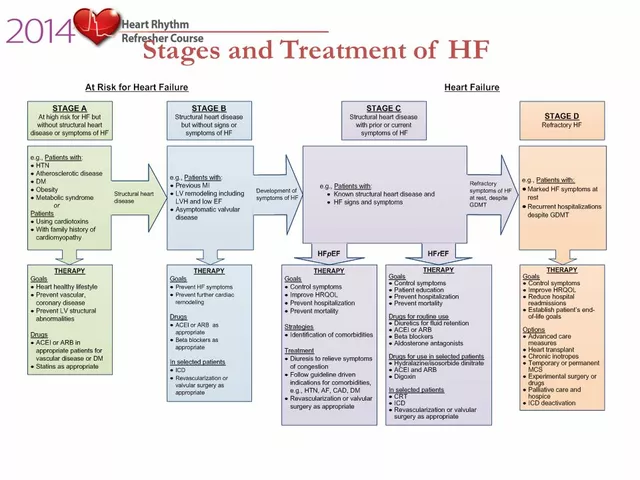Athlete Medication Checker
Check if medications are allowed under WADA rules. Many prescription drugs contain prohibited substances. Always verify with Global DRO before taking any medication.
Every year, thousands of athletes take prescription meds to manage asthma, ADHD, diabetes, or chronic pain - and many don’t realize they’re risking a doping violation. It’s not about cheating. It’s about not knowing. A 2023 study found that 42% of athletes who tested positive for banned substances had no idea their medication contained a prohibited ingredient. That’s not negligence. That’s a system failure.
What’s Actually Banned? It’s Not What You Think
The World Anti-Doping Agency (WADA) updates its Prohibited List every year. The 2024 list includes over 250 specific substances, but the real confusion comes from context. Some drugs are banned only during competition. Others are banned all the time. And some are allowed - but only if you don’t exceed a certain dose. For example, salbutamol (the active ingredient in most asthma inhalers) is permitted inhaled up to 1,600 micrograms over 24 hours. Go over that? You’re in violation. Take it by IV? Always banned. Same drug. Different route. Different rule. Corticosteroids like prednisone are another big one. They’re fine for treating inflammation, but if you’re using them to boost recovery or reduce muscle soreness before a race? That’s performance enhancement. Even if your doctor prescribed it for a legitimate condition, you still need a Therapeutic Use Exemption (TUE) if you’re competing at a registered level. And don’t assume your prescription is safe just because it’s legal. Adderall? Banned. Insulin? Allowed, but only if you have diabetes and a TUE. Testosterone gel? Always banned unless you have a documented hormonal disorder and a TUE approved by your federation.Therapeutic Use Exemptions (TUEs): The Only Legal Way Out
If you need a banned substance for a medical condition, you can apply for a TUE. But it’s not a formality. It’s a process. To get approved, you must prove four things:- You have a diagnosed medical condition that requires the banned substance
- The medication won’t give you an unfair advantage - it just brings you back to normal health
- No permitted alternative exists that works as well
- You applied before taking it - unless it was an emergency
Side Effects You Can’t Ignore
Just because a drug is allowed with a TUE doesn’t mean it’s harmless. Athletes often focus on the doping risk and forget the health cost. Corticosteroids, for instance, can suppress your adrenal glands if used long-term. That means your body stops making its own cortisol. If you get injured or stressed during competition, your body can’t respond - leading to fatigue, nausea, or even collapse. Beta-2 agonists like salbutamol and formoterol can cause heart palpitations, tremors, and in rare cases, dangerous arrhythmias. A 2022 study in the British Journal of Sports Medicine found athletes using high-dose inhalers reported elevated heart rates even at rest. Stimulants like methylphenidate (Ritalin) or amphetamines (Adderall) can improve focus - but they also raise blood pressure, increase anxiety, and disrupt sleep. One NCAA athlete described his TUE process for Adderall as an “11-month nightmare” of specialist referrals and repeated applications. He got approved - but still had to cut back on caffeine and avoid training in hot weather because his body couldn’t regulate temperature properly. And then there’s insulin. For athletes with Type 1 diabetes, it’s life-saving. But if you’re not diabetic and you misuse it to burn fat faster? That’s dangerous. Hypoglycemia can strike during a race. One swimmer collapsed during a 200m freestyle after taking extra insulin to “lean out.” He survived - but lost his season.
Doctors Don’t Always Know the Rules
Here’s the scary part: your doctor might not know what’s banned. A 2022 survey found that 68% of physicians treating athletes had little to no training in anti-doping rules. Even more alarming: 63% of those doctors had never looked up WADA’s Prohibited List - even though 89% said they should. That’s why you can’t just hand your prescription to your GP and assume everything’s fine. You need to tell them you’re an athlete. You need to ask: “Is this on WADA’s banned list?” And you need to verify it yourself. Use Global DRO. It’s free. It’s reliable. It’s updated daily. Type in the brand name, country, and sport. It tells you exactly what’s allowed and what’s not. No guesswork. No assumptions.Clearance Times Matter More Than You Think
Some substances clear your system in hours. Others linger for days. Cortisone injections? Take 48-72 hours to clear. Some stimulants? 6-12 hours. But here’s the catch: testing doesn’t care how you feel. It only cares what’s in your urine. A runner in Melbourne took a cold medicine containing pseudoephedrine on a Thursday night. He didn’t think twice - he wasn’t racing until Sunday. But pseudoephedrine stays detectable for up to 48 hours. He tested positive. His result was flagged. He lost his scholarship. That’s why you need to know not just what’s banned - but how long it stays in your body. Global DRO gives you clearance times. Use them.What Happens If You Get Caught?
An anti-doping rule violation (ADRV) isn’t a slap on the wrist. It’s career-ending. Sanctions range from a warning to a four-year ban - and it doesn’t matter if you meant well. The rule is strict liability. You’re responsible for everything that enters your body. In 2022, over 1,500 athletes worldwide received sanctions for medication violations. Most weren’t trying to cheat. They just didn’t check. And it’s not just competition. If you’re in a testing pool - even if you’re a junior athlete or a recreational competitor in a national league - you’re subject to testing. Your school, your club, your federation all follow WADA rules.
What You Should Do Right Now
If you’re an athlete taking any prescription, over-the-counter, or supplement:- Check every medication on Global DRO - before you take it, even if you’ve used it before
- Tell your doctor you’re an athlete. Ask them to check WADA’s list too
- If it’s banned, apply for a TUE immediately - don’t wait
- Know the clearance time. Stop using in-competition banned substances at least 72 hours before your event
- Keep copies of all prescriptions, TUE approvals, and test results
Parents and Coaches: You’re Part of the System Too
Parents often panic when they hear “doping rules.” Some pull their kids off essential meds like insulin or asthma inhalers - thinking it’s safer than risking a ban. That’s worse. A 2023 USADA survey found 28% of youth athletes stopped taking necessary medications because they feared a positive test. Over half of those kids reported worsening symptoms - asthma attacks, panic attacks, diabetic episodes. Coaches, you need to know this too. If you tell an athlete to “just take the pill,” you’re putting them at risk. If you ignore a TUE request, you’re failing them. The goal isn’t to block medicine. It’s to make sure medicine doesn’t become a loophole for cheating - while still letting athletes stay healthy.The Future Is Clearer - But You Still Have to Act
WADA is making progress. Pharmaceutical companies in Europe now label drugs with WADA status. New TUE forms are standardized. Education programs are expanding. But none of that helps if you don’t use the tools you have. You don’t need to be a scientist. You don’t need to memorize the Prohibited List. You just need to check. Once. Before every new medication. Every refill. Every change. Because in sport, ignorance isn’t an excuse. It’s a risk - and the cost is too high.Can I use my regular asthma inhaler if I’m an athlete?
Yes - but only if it’s salbutamol or salmeterol, used via inhaler, and you don’t exceed 1,600 micrograms in 24 hours. Other forms (nebulizers, pills, injections) are banned. Always check your specific brand on Global DRO, and if you’re competing at a registered level, you may still need a TUE depending on your federation’s rules.
Do I need a TUE for insulin if I have diabetes?
Yes. Even though insulin is not performance-enhancing for people with diabetes, it’s a prohibited substance under WADA rules. You must apply for a TUE before using it in competition. Provide medical records showing your diagnosis, treatment plan, and insulin usage history. Many elite athletes with Type 1 diabetes compete successfully with approved TUEs.
What if my doctor prescribes a banned drug without knowing?
You’re still responsible. WADA’s strict liability rule means the athlete - not the doctor - bears the consequence of a positive test. That’s why you must verify every medication yourself using Global DRO. Tell your doctor you’re an athlete and ask them to check WADA’s list. If they don’t know, find a doctor who does.
Can I use over-the-counter cold medicine?
Some can. Many contain banned stimulants like pseudoephedrine, phenylephrine, or dextromethorphan. Even common brands like Sudafed or DayQuil may trigger a positive test. Always check each ingredient on Global DRO. Don’t assume “OTC” means safe. Athletes have lost medals over cold medicines.
How long does it take to get a TUE approved?
For international athletes, it typically takes 21 days. National-level athletes usually get a response in 10-18 days. Emergency TUEs (like for sudden asthma or injury) can be processed in 72 hours. Never wait until the last minute. Apply as soon as you know you need the medication - even if competition is months away.
What happens if I forget to apply for a TUE and test positive?
You’ll face an anti-doping rule violation. Sanctions can include a warning, suspension, or a four-year ban - regardless of intent. You may appeal, but you’ll need to prove you made a reasonable effort to comply (e.g., checked Global DRO, contacted your NADO, etc.). The burden is on you. Prevention is always better than trying to explain after the fact.
Are recreational athletes subject to these rules?
Yes - if you’re registered with a national governing body that follows WADA rules (which includes most Olympic sports, triathlon, swimming, athletics, etc.). Even if you’re not in a testing pool, you’re still bound by the rules. If you compete in sanctioned events, you’re subject to testing. Check your federation’s policy - most require all members to comply.
Is there a list of safe supplements for athletes?
No. There’s no such thing as a 100% safe supplement. Even “natural” or “organic” products can be contaminated with banned substances. The safest approach is to avoid supplements unless absolutely necessary. If you use them, choose products certified by Informed-Sport or NSF Certified for Sport. But even those aren’t foolproof. Always check the ingredients against Global DRO.




